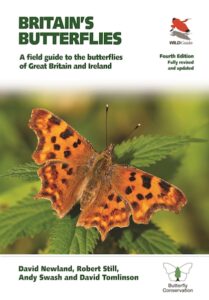 The first visit I made to England was for the 2005 BirdFair. Having landed at Birmingham Airport, I drove a right-side steering car (the first time ever!) to Uppingham – becoming briefly bewildered on the Leicester ring road along the way – where I found my lodgings and kipped for the night. The next morning I rose, consumed a breakfast sufficient to satiate three farmhands, and strolled down the high street, where I was stopped dead in my tracks by the most exquisite butterfly I had up until that point in my life ever seen – a Peacock (Aglais io).
The first visit I made to England was for the 2005 BirdFair. Having landed at Birmingham Airport, I drove a right-side steering car (the first time ever!) to Uppingham – becoming briefly bewildered on the Leicester ring road along the way – where I found my lodgings and kipped for the night. The next morning I rose, consumed a breakfast sufficient to satiate three farmhands, and strolled down the high street, where I was stopped dead in my tracks by the most exquisite butterfly I had up until that point in my life ever seen – a Peacock (Aglais io).
While admittedly not a rare butterfly in that part of Great Britain, it was so bold, so vivid, and so unexpected that it held me spell-bound (much to the amusement of at least one passing Uppinghamian (Uppinghammer?). Not being in possession of a guide to the butterflies of Great Britain (forgive me; I was young), I stared at it long and carefully, seeking to memorize every detail for when the opportunity arose to consult a field guide – which I did well within the first day of the fair.
Spring forward to the Spring of 2021. Sitting here in Scappoose, Oregon (population 7,270 – Saaaa-lute!) and pining for a return to the England I last visited in 2019, I thumb through a recently-arrived copy of Britain’s Butterflies: A Field Guide to the Butterflies of Great Britain and Ireland (Fully Revised and Updated Fourth Edition), and upon page 135 those four magnificent eye spots meet my gaze once again. “O to be in England!”
But enough about my lingering longings. The newly published fourth edition of Britain’s Butterflies by the team of David Newland, Robert Still, Andy Swash, and David Tomlinson – with a foreword by Julie Williams – presents all fifty-nine of the regularly breeding species of Great Britain and Ireland, as well as “four former breeders, ten rare migrants and one species of unknown status.” Rich in all the needed information any naturalist could hope for while afield, not only about the adults of each species but the eggs, caterpillars, chrysalises, and even food plants as well, and all of this supported by vivid color photographic images, this is the absolutely essential field guide to have for any field foray anywhere upon the British Isles.
Available from:
If you enjoyed reading this, please consider signing up for The Well-read Naturalist's newsletter. You'll receive a helpful list of recently published reviews, short essays, and notes about books in your e-mail inbox once each fortnight.

